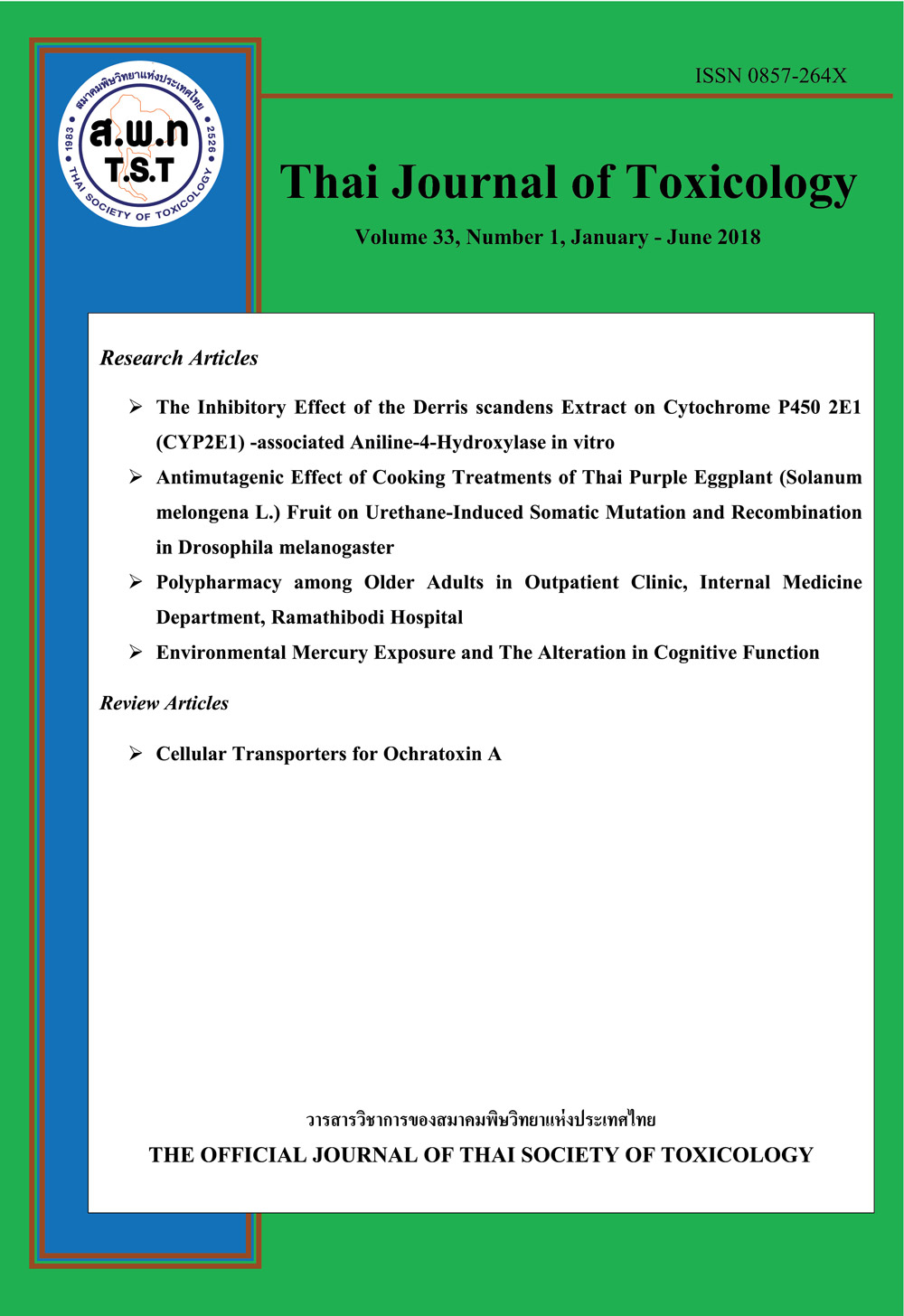การขนส่งโอคราทอกซินเอระดับเซลล์
Main Article Content
บทคัดย่อ
โอคราทอกซิน เอ (OTA) เป็นสารพิษที่พบการปนเปื้อนได้ในอาหารหลายประเภท OTA มีความเป็นพิษต่อไต ตับ ระบบประสาท เป็นสารก่อวิรูปและเป็นพิษต่อระบบภูมิคุ้มกัน อวัยวะเป้าหมายหลักในการก่อพิษในมนุษย์คือไต การศึกษาการขนส่ง OTA ในระดับเซลล์เป็นสิ่งสำคัญที่จะสร้างความเข้าใจในกระบวนการดูดซึม การกระจาย และการขับออกของ OTA ในร่างกาย โปรตีนบนเยื่อหุ้มเซลล์ที่ใช้ในการขนส่ง OTA ได้แก่ Organic anion transporters (OATs), organic anion transporter polypeptide (OATPs), Breast cancer resistant protein (BCRP) และ multidrug resistant proteins (MRPs) โปรตีนขนส่ง OAT1, OAT3 และ OAT4 เป็นโปรตีนหลักที่ทำหน้าที่ในการดูดซึม OTA จากท่อไต ซึ่งมีหน้าที่การทำงานเช่นเดี่ยวกับ novel human organic anion transporter NPT4 และ OATP1A2 ที่มีการแสดงออกอยู่ที่ท่อไตส่วนต้น OATP2B1 ที่มีการแสดงออกอยู่ที่ลำไส้เล็กอาจทำหน้าที่ในการดูดซึม OTA ที่ปนเปื้อนในอาหารผ่านทางช่องลำไส้เล็ก ในขณะเดี่ยวกัน OATP1B1 และ OATP2B1 ที่มีการแสดงออกอยู่ที่เยื่อหุ้มเซลล์ตับไซนูซอยด์ สามารถเพิ่มการเมตาบอลิซึมและการขับสารพิษออกจากร่างกาย ผลโดยรวมของโปรตีน OATPs ที่มีต่อการขนส่ง OTA ในร่างกายนั้นขึ้นอยู่กับตำแหน่งของเนื้อเยื่อที่มีการแสดงออกของโปรตีนขนส่งนี้ ส่วน BCRP,MRP2 และMRP4 เป็นโปรตีนขนส่งที่ทำหน้าที่ขับสารออกจากเซลล์ สามารถลดการสะสมของ OTA ในเซลล์และโดยรวมสามารถลดการเกิดพิษของ OTA ได้ การขนส่ง OTA ในระดับเซลล์นั้นพบว่า ขึ้นอยู่กับ pHโดยการขนส่งจะเพิ่มมากขึ้นเมื่อ pH ลดลง ซึ่งเป็นผลมาจากการเปลี่ยนแปลงอัตราส่วนของไอออนิกโมเลกุล โดยสรุปความรู้ด้านการขนส่งระดับเซลล์ของ OTA ในเนื้อเยื่อชนิดต่าง ๆ สามารถนำไปประยุกต์ใช้ในการพัฒนาวิธีการป้องกันพิษของ OTA ได้


